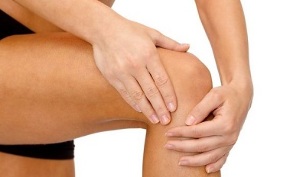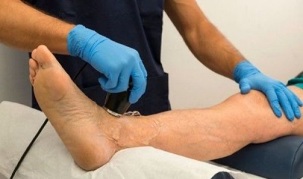Arthritis and osteoarthritis are very common today. Many people confuse these diseases because of the similarity in their manifestations. But in fact, both diseases are very different. You can understand the difference between diseases only if you study their characteristics.
Pathological types

It is not possible to diagnose joint disease based solely on pain. Almost any disease of the musculoskeletal system is accompanied by pain.
The following diseases are the most common:
- Arthritis,is triggered by inflammation of the joint surface. This inflammation occurs for various reasons. The primary form develops against the background of a number of diseases of gout, septic and rheumatic nature.
The secondary form can develop after systemic lupus erythematosus, borreliosis, arthropathy.
- Arthrosiscauses the destruction of the cartilage and part of the bone below.
Primary generally develops for no apparent reason. It usually manifests itself in older people and affects the surface of large symmetrical bony joints.
The secondary form of the disease occurs after a serious illness. This form is often caused by a genetic predisposition.
Inflammation of large bone joints (shoulder, knee) is often caused by overweight, strenuous physical exertion, past trauma and endocrine diseases.
- Arthropathy - a violation of the integrity of the joints as a result of complex diseases.
- Tendonitis is an inflammatory process that occurs in the tendons.
- Enthesit - structural changes in the connection of soft tissue with bone.
- Bursitis is a bursa lesion.
- Capsulitis - inflammation of the joint capsule and violation of its integrity.
How to distinguish different degrees of severe osteoarthritis from arthritis? You should know that arthritis and osteoarthritis have a different nature that determines the treatment of arthritis.
Differences in features

How is arthritis different from osteoarthritis? Symptoms of a certain disease. The symptoms of arthritis and osteoarthritis of the knee joint are specific.
What is osteoarthritis? A chronic disease that is naturally destructive. The peculiarity of the disease is that it affects the cartilage and is irreversible.
The disease mainly affects people of both sexes over the age of 60. In other words, osteoarthritis of the knee joint is considered to be a disease in which large-scale cartilage destruction occurs. First, a large joint, for example, is affected by the ankle. Particular attention should be paid to its treatment.
Rheumatoid arthritis is an inflammation of several bone joints when the hands or feet are touched. The main difference between osteoarthritis and arthritis is that the second disease is accompanied by inflammation of the large bone joints - the knee, shoulder.
Arthritis has a number of secondary symptoms. In particular, it causes swelling of the joints and redness around them. In addition, the patient has a fever, which impairs motor function. One of the factors can cause a disease: allergies, infectious diseases, metabolic diseases and trauma.
In the case of an inflammatory process, a person's motor activity is impaired. In particular, the area of movement has been significantly reduced. This restriction applies to actions that are performed both independently and when a person needs help.
Inflammation affects one or more joints at the same time. Generally, this phenomenon is accompanied by pain without an exact location, and the joint surface of the ankle joint or foot remains untouched.
It should be remembered that the main danger of this disease is that the changes occur not only in the bone tissue, but also in other organs, such as the digestive, visual and excretory organs. Changes can also affect the dermis.
The disease affects people of all ages, but most cases are diagnosed in women between the ages of 35 and 50.

When it comes to pain, arthritis always accompanies it. In the case of osteoarthritis, the destruction of bone tissue is generally not symptomatic without causing any pain, so that the patient does not see it.
In the first case, the disease manifests itself in some way. Weakness of the body, sometimes accompanied by psoriasis. In the second case, all inflammatory changes occur without external symptoms.
Arthritis is characterized by swelling of the soft tissues on the outside. They are also characterized by paralysis of the joints. Changes of a different nature occur smoothly and practically do not manifest themselves. However, they are characterized by a special "dry" crisis that occurs as a result of joint wear.
What is the difference between arthritis and osteoarthritis? Second, it destroys cartilage, and rheumatic disease manifests itself as inflammation of the bone tissue. These are the main symptoms that can distinguish arthritis that affects a person or osteoarthritis.
Difference in symptoms
How is osteoarthritis of different origins different from arthritis? Osteoarthritis and arthritis differ in the symptoms of the disease. It is important to know that symptoms and treatment are related.
Arthritis and osteoarthritis of the knee joint show similar symptoms. However, you can still distinguish them. Arthritis and osteoarthritis of the knee joint and others manifest themselves with severe pain. But the nature of the pain is different. A patient with osteoarthritis feels pain when moving or due to a heavy load on the knees. It hurts, the attack lasts a long time.
The first stage is characterized by mild pain, so the disease is often detected only at the time of diagnosis.
In the next stage, the patient feels pain even under light load.

In the third stage of development, the disease is considered indifferent. The pain may appear even when there is no movement. After bringing the joint to a comfortable position, the pain is reduced.
Hand, shoulder or hip disease is characterized by acute pain that does not usually pass. Often the pain attack starts early in the morning. The symptoms of arthritis and osteoarthritis are different. You can tell if arthritis or osteoarthritis affects the joints by having a crisis in them. If heard, the second disease means it hit the bone joint.
Osteoarthritis of the knee joint or other large joints can be accompanied by a crisis when the cartilage layers are destroyed and there is direct contact with the bones.
The disease adversely affects the mobility of an affected joint. For example, osteoarthritis of the knee is accompanied by leg pain. Arthritic arthritis or another type of arthritis occurs with a feeling of stiffness in the body.
How is arthritis different from osteoarthritis? In addition, gonarthrosis persists without external swelling, but with external changes in the joints.
Osteoarthritis or arthritis affects the joints: what's the difference? In addition to the main symptoms, arthritis is accompanied by hyperthermia, eye inflammation, excessive sweating and weakness.
Differences in diagnostics
Diagnosis of arthritis of various origins and osteoarthritis is possible only by determining the cause of the disease. Treatment begins only after determining the stage of development of the disease. In addition, the attending physician should make a prognosis to prevent a poor outcome.
Treatment of osteoarthritis at different stages and arthritis begins only after a detailed diagnosis.

The complex of medical tests consists of general clinical laboratory researches, X-rays, microscopy and bacteriological researches.
Diseases of different origins differ according to the results of tests.
If arthritis and osteoarthritis are not treated immediately, it will not be possible to cure it. In addition, systematic prevention of arthritis and osteoarthritis should be carried out. Do you want to get rid of arthritis and osteoarthritis through effective treatment? Take a major exam that includes MRI and arthroscopy.
X-ray is an informative method that allows to distinguish the manifestations of arthritis from osteoarthritis of the knee joint.
Differences in treatment
How is arthritis and osteoarthritis treated? Symptoms and treatment of diseases are interrelated. The treatment for osteoarthritis is the same, but there are some differences. From a medical point of view, diseases are different, so the treatment of osteoarthritis and arthritis is crucial.
How are osteoarthritis and rheumatoid arthritis treated? Complex therapy will help to treat any of the diseases. In both cases, patients with osteoarthritis and arthritis are prescribed medication, including medication (medications prescribed by a doctor). Physiotherapy is prescribed, which is especially important for patients with arthritis or a form of knee joint, as it helps speed up treatment. Treatment for arthritis and osteoarthritis of the joints includes diets with variable menus.
Those who want to improve their health "without drugs" often resort to various folk remedies.
Diseases can last long enough and become chronic. Regardless of the cause of their appearance, they cause the development of complications. For this reason, patients should be under regular or long-term medical supervision and undergo a rehabilitation program designed specifically for them.
Special attention should be paid to disease prevention to prevent disease.

- First, it is necessary to treat all diseases of the musculoskeletal system in a timely manner and undergo comprehensive rehabilitation after injuries.
- Second, you need to limit physical activity or at least give a dose, eat right and monitor your weight.
- Third, you should consult a doctor regularly to correct the presence of bone deformities in a timely manner.
Thus, the difference between the two diseases is significant. It manifests itself with symptoms, signs and causes of diseases. The nature of the course is also specific. In the absence of timely professional help, inflammatory processes in bone tissue and cartilage can lead to complications.
Prevention will help prevent the development of this or that disease, which requires special attention.



































